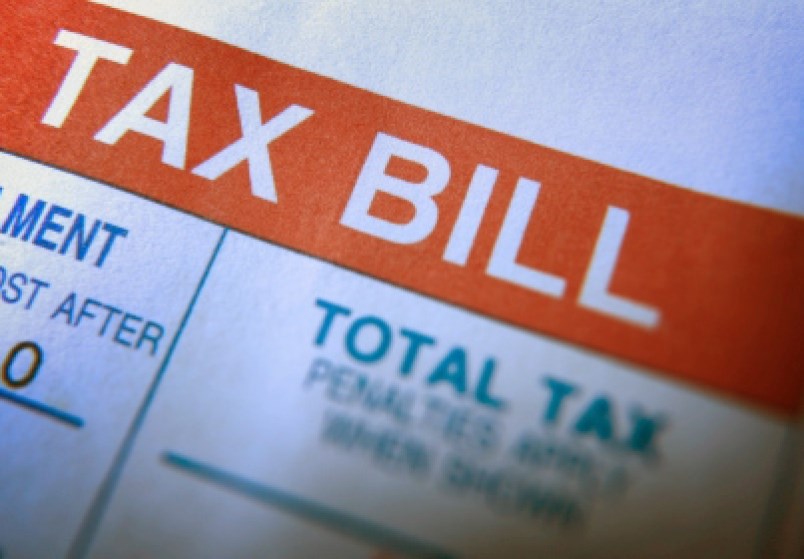LAC LA BICHE - The annual municipal property tax season is right around the corner.
On May 19, Lac La Biche County's financial officials are expecting to mail out thousands of assessments to residents and businesses in both rural and urban areas across the county. But prior to issuing tax payment notices, which must be paid by the end of June, county officials must first decide if they are going to raise rates... and to which ratepayers.
At last Tuesday’s Lac La Biche County council meeting, elected officials delayed a decision to implement the municipal mill rates until they had more discussions.
With a provincial requirement issued by the Minister of Municipal Affairs for the county to meet provincial mill rate margins of no more than a 5:1 ratio between commercial and residential rates, plus economic challenges facing many area residents, more time to make a decision was needed.
Provincial fee requirement change
In 2016, in an effort to support rural businesses, the provincial government amended the Municipal Government Act to make sure that the tax rates for rural, commercial or industrial ratepayers within the Specialized Municipality of Lac La Biche County would be no higher than a 5:1 ratio in comparison to residential ratepayers in the hamlets of Lac La Biche and Plamondon.
The amendment was intended to grow the economy and keep large corporations active in the municipality.
Since the legislation was passed, municipal officials have been trying to bring the margin - which was originally as high as a 7.35:1 ratio - down to the target.
Comparing rates
Lac La Biche County is one of only 11 municipalities in the province with Specialized Municipality status, allowing for commercial rates to differ for businesses whether they are in urban or rural service areas.
The mill rate for businesses within the urban centres in and around the hamlets of Lac La Biche and Plamondon has remained at 10 for several years. The mill rate for businesses - mainly industrial - in the rural areas of the municipality are currently almost double, at 18.3. The current rate formula means that a business on Plamondon’s main street with an assessed property value of a million dollars would pay $10,000 a year for its municipal portion of taxes.
A business with the same assessed value, but located in rural Owl River, would see an $18,300 municipal tax levy. A residential property with the same assessed value would pay $3,120 per year in the municipal portion of taxes, based on the current residential mill rate of 3.12. The margin between the 18.3 rate for rural service areas and the 3.12 in residential is currently at a ratio of 5.89:1.
The ratio only includes the municipal portion of the tax levy and doesn't include taxes levied for the Greater North Foundation, public education and the 911 dispatch services.
In an effort to meet the 5:1 target, while making sure the already-tabled $67 million municipal budget for 2022 can support projects like the $27 million aquatic centre and the $16 million Main Street revitalization, tough decisions need to be made, said Mayor Paul Reutov.
In 2020, during the 2021 tax discussions, municipal councillors raised the municipal tax rate for residential ratepayers by four per cent. Last year, the previous council opted to keep the rates the same.
Potential mill rates for 2022
Last week, five options were explored in order to not only meet the province’s 5:1 ratio but to weigh out the implications of what a new mill rate change might create for all taxpayers.
Ultimately, any major changes to meet the ratio could cause an increase for many taxpayers, so the best option is to keep the formula the same, said Coun. Kevin Paré
“Right now there are people that aren’t going to be able to pay this year's taxes because of the increase in utilities and the cost of living. They’re going to have to take out loans in order to pay their taxes this year,” he said.
The councillor also said that with more than $32 million this year in capital spending planned in the budget, residents may not react well to an over-spending, over-taxing council.
“I hate to play the devil's advocate but you know taxpayers are going to see what we’re building, what we’re buying, what we’re spending and then they’re going to see a tax increase and wonder,” he told council during last week’s discussions. “Right now they’re making tough decisions whether or not to pay bills or buy groceries, and if we're going to raise taxes it’s going to be another bolt in the coffin,” said Paré.
Solutions
While it is extremely valuable to recognize the challenges a potential tax increase could create, at some point the province's continuing request to meet the 5:1ratio expires, says Coun. Charlyn Moore, before it is immediately mandated.
“They have been asking us for almost five years now so we have to keep that in our mind,” she says while other cost-saving options should be evaluated from county-funded programs to county utility services that are subsidized.
“If we are not going to raise taxes or we are not going to change services then we are going to put the nail in our own coffin.”
Currently, county officials are moving forward to keep the tax ratio the same as they weigh out options before assessments are required to be sent out on May 19.
Unless a special meeting is called sooner, council's next opportunity to cement the 2022 tax rates is at their April 26 regular council meeting.
With files from Rob McKinley



